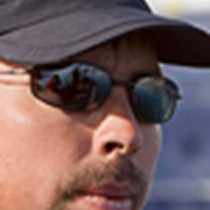Hornsund
We woke up to a beautiful day in Hornsund with a strong breeze coming out from the main fjord. The day began with learning how to handle our presence in a vulnerable arctic environment. Due to the short season, the plant and animal life far north are sensitive to disturbance.
Walking at Gnålodden showed us the density of a bird cliff. The main species that nest there are Kittiwakes and Brunnich’s guillemots. The Kittiwakes were still buildings nests. We watched them pick up moss, soak it in a small river and fly up to the cliff to build them.
At Gnålodden we saw an old Norwegian trappers hut from the early 1900’s. This area is famous for the number of polar bears that have migrated from the west coast to the east coast of Spitsbergen. In the1930’s Svalbard’s most famous female trapper used to hunt here. For several years she was trapping in this region, some seasons alone. Along the bird cliffs there were also a number of polar foxes. It was amazing to hear that in 1910, a polar fox pelt (the blue/dark version) was worth more than a polar bear skin, and had the same value then as it has today – 200 US dollars. Being a trapper in the early 1900’s could prove to be prosperous, but it has lead to a decreased population of many species. This includes polar bear, walrus, reindeer and multiple species of whale.
On our hike we found a grave of unknown origin. What is special about Svalbard, is the permafrost that goes 200-300 meters into the ground. This means that it is only the upper layer of the ground, and 3-4 feet that will melt every summer. Anything that is buried into the ground, will sooner or later due to the freezing and thawing, be pushed up to the surface. This is what has happened to this gravesite, and is a common site along Svalbard’s coastline.
After leaving Gnålodden, we went searching for polar bears onboard the National Geographic Endeavour. Finding wildlife in Svalbard done through teamwork between staff, crew and guests. Since many of the animals in this region used to be hunted, many are still skittish to ships and humans. Polar bears do not claim territories like many other animals, but wander about on the moving sea ice. This makes them harder to find. However, we were lucky to find one polar bear today, as it was lying on fast ice in front of a glacier in Brepollen. With the two polar bears that we found after dinner yesterday, we are now up to three in total, and tomorrow we will go into the pack ice to look for more.
We woke up to a beautiful day in Hornsund with a strong breeze coming out from the main fjord. The day began with learning how to handle our presence in a vulnerable arctic environment. Due to the short season, the plant and animal life far north are sensitive to disturbance.
Walking at Gnålodden showed us the density of a bird cliff. The main species that nest there are Kittiwakes and Brunnich’s guillemots. The Kittiwakes were still buildings nests. We watched them pick up moss, soak it in a small river and fly up to the cliff to build them.
At Gnålodden we saw an old Norwegian trappers hut from the early 1900’s. This area is famous for the number of polar bears that have migrated from the west coast to the east coast of Spitsbergen. In the1930’s Svalbard’s most famous female trapper used to hunt here. For several years she was trapping in this region, some seasons alone. Along the bird cliffs there were also a number of polar foxes. It was amazing to hear that in 1910, a polar fox pelt (the blue/dark version) was worth more than a polar bear skin, and had the same value then as it has today – 200 US dollars. Being a trapper in the early 1900’s could prove to be prosperous, but it has lead to a decreased population of many species. This includes polar bear, walrus, reindeer and multiple species of whale.
On our hike we found a grave of unknown origin. What is special about Svalbard, is the permafrost that goes 200-300 meters into the ground. This means that it is only the upper layer of the ground, and 3-4 feet that will melt every summer. Anything that is buried into the ground, will sooner or later due to the freezing and thawing, be pushed up to the surface. This is what has happened to this gravesite, and is a common site along Svalbard’s coastline.
After leaving Gnålodden, we went searching for polar bears onboard the National Geographic Endeavour. Finding wildlife in Svalbard done through teamwork between staff, crew and guests. Since many of the animals in this region used to be hunted, many are still skittish to ships and humans. Polar bears do not claim territories like many other animals, but wander about on the moving sea ice. This makes them harder to find. However, we were lucky to find one polar bear today, as it was lying on fast ice in front of a glacier in Brepollen. With the two polar bears that we found after dinner yesterday, we are now up to three in total, and tomorrow we will go into the pack ice to look for more.




